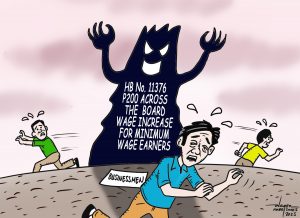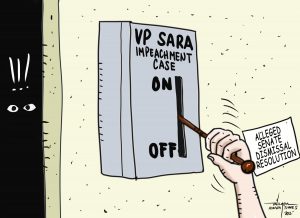The prevalence of rice at P20 per kilo still in some of Luzon and the Visayas markets is a welcome development especially with regards to the commitment of then Presidential candidate Ferdinand R. Marcos, Jr. But why is the staple food only made available in the Visayas and Luzon? Are Mindanaoans not entitled to buy rice at a much lower cost per kilo? Is it a way of showing that we are considered second class Filipinos? Or, is politics behind this apparent neglect?
Again, the availability in the market of some areas in the Visayas and Luzon only is still a welcome development. What is not welcome however, is the quality of rice that is brought out in the market. Where does this rice stock come from? If the rice has been purchased from other rice-producing countries in Asia or even from Philippine farmers, then the already brownish color of the rice grain clearly indicates that the stocks have long been stored in the warehouses of the National Food Authority (BFA).
Why did the said agency allow the rice to be stocked for so long and deteriorate amidst complaint of the Filipino people that the prices of rice were already getting too high that only the privileged can afford to buy?
And why is the government priding too much with the appearance of the very low quality rice grains in the market when from the looks of it anybody can immediately think that the grains are good only for hog feeds?
But again, the Filipino consumers can only secretly air their complaints because they cannot do anything about the grains quality unless they have the money to buy the high-end quality rice.
With the majority of the Filipinos’ economic condition, they just have to “bite the bullet.” After all their desire in life is to live with their stomach not empty. So, no matter the color, and no matter the smell, the marginalized majority of the Filipinos have to buy no matter what.
As to the political promise there it is now – rice at P20 per kilo. For certain the politician who made such commitment, did not include in the promise that at P20/kilo goes with it the definitive high quality food staple.
**********************************
According to a top City government official of Davao the local transport problem will be alleviated once the interim bus transport system will be in place by October of this year.
Why, is Davao City having problem of lack of public transportation? Is not the city having the bigger problem of vehicular congestion that renders the major routes like the MacArthur Highway and the J.P. Laurel avenue hardly passable during certain hours of the day?
For the past year or two both commuters and drivers were complaining about the vehicle congestion on the earlier-mentioned thoroughfares despite the opening of the first phase of the Davao Coastal road that was touted around to address traffic in the major route going south of Davao City. Many motorists however have observed that the vehicle congestion in areas starting from Crossing MacArthur Highway and Maa Road hardly show easing even a little.
But wait, are our traffic managers saying that the bigger problem that needs immediate solution is the lack of public utility transportation and not the increasing number of vehicles plying the city roads? If so, why will the city government implement the solution? Why not let the Land Transportation Franchising and Regulatory board be allowed to do its job of issuing more franchises and, in coordination with the city government, determines where should the new routes be established?
What is going to happen with the buses purchased by the city government once these are fielded in designated routes? Will the buses be collecting fares from passengers? Will the passenger bus operation become one of the city’s economic enterprises like the Ecoland Transport terminal?
And what office or department in the city government will the responsibility of managing the bur operation once these are fielded as an income-generating business for the local government?
We can only hope that running the buses as money maker for the city will not become a distraction to finding a more effective solution to the city’s burgeoning traffic problem.




